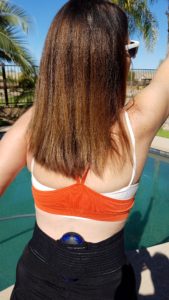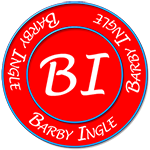 About a month ago I started using a new tool that I have found so helpful I keep it in my pain management toolbox and I wanted to share it with you. It’s a little durable medical device called the Oska Pulse. Having full body pain and living with multiple chronic conditions, I end up using a variety of tools and am excited to add this one to the list. The Oska Pulse has a one-time cost and can replace a TENS unit. I have been using a TENS unit since 2003 and its about time to replace it and all its replacement parts. Oska Pulse has done that for me. This device is a non-invasive, lightweight and portable system with no adverse side effects. The kind of tool I really like. Bonus, it is approved for air and ground travel.
About a month ago I started using a new tool that I have found so helpful I keep it in my pain management toolbox and I wanted to share it with you. It’s a little durable medical device called the Oska Pulse. Having full body pain and living with multiple chronic conditions, I end up using a variety of tools and am excited to add this one to the list. The Oska Pulse has a one-time cost and can replace a TENS unit. I have been using a TENS unit since 2003 and its about time to replace it and all its replacement parts. Oska Pulse has done that for me. This device is a non-invasive, lightweight and portable system with no adverse side effects. The kind of tool I really like. Bonus, it is approved for air and ground travel.
I tried it in multiple locations on my body and found that I like it on my lower back, stomach, and neck area best. When it is on my legs, I do feel the magnetic pulse and although it was not painful, it was an irritant, so I moved it. I am glad I did. On my back it offers me a warming relief of comfort. I have been using it 5-6 times a day for 30 mins and actually just recently switched to the 90-min version, so now am using it 3-4 times a day. I have tried it with the strap it comes with where no skin contact is needed, and also while laying down I have just put it directly on my skin. I like it both ways.
The device works at the source of pain instead of masking symptoms by increasing blood flow, through Pulsed Electromagnetic Fields (PEMF). This increase in blood flow helps restore injured cells helping take the edge off of back, neck, muscle and joint pains. Along with increasing the circulation, Oska Pulse also helps reduce inflammation and improve mobility; something I need as a chronic pain patient. I have used the device at home and when traveling. I also was sure to check with my doctor before using it to make sure that he is aware and get his recommendations as I do with any new tool I add to my toolbox. The device is also shareable, unlike my TENS unit. My husband and a few friends have tried it out for themselves, too.
The Oska Pulse is registered with the FDA as a Class 1 durable medical device that works at the source of pain. The magnetic field of the system travels through clothing and all tissue types to address the source of pain at a cellular level. According to the makers of the Oska Pulse, this widely used tech is considered an effective and non-invasive way to relieve pain for over 60 years, primarily in a clinical setting with over 10,000 clinical studies supporting its effectiveness. Now they have it in a home device that we can use every day, as needed, and pay a one-time fee to get access to it, instead of having to go to your provider to have access every time.
There were a few precautions I took into consideration before trying this that I discussed. If you are planning on having a surgery or procedure soon, its not indicated for your use. A few other considerations were to talk with your provider before using, don’t store it in sunlight or hot surfaces and don’t use it if you drop it in water or it is submerged in liquid as that may cause irreparable damage to the electronic components.
If you choose to try Oska you shouldn’t feel a thing. I know I have turned up my TENS unit too high in the past and had to immediately turn it down. I didn’t have that challenge with this device. You can’t overuse it and if you choose to try it, and it helps ease your pain levels, you can keep it on as you see fit for your individual needs, because PEMF therapy works differently for everyone. Some users experience relief within a few days, and others may take a few weeks or more. As I said before, I tried it in multiple spots and it worked best for me on my back and neck. I don’t feel any pulsing or tingling there and only had a warming (comforting) effect where I had it placed which I am told is due to the increase in blood flow to these areas.
By Barby Ingle – Barby Ingle lives with reflex sympathetic dystrophy (RSD), migralepsy and endometriosis. Barby is a chronic pain educator, patient advocate, and president of the International Pain Foundation. She is also a motivational speaker and best-selling author on pain topics. More information about Barby can be found at her website. The information in this article should not be considered as professional medical advice, diagnosis or treatment. It is for informational purposes only and represents the author’s opinions alone. It does not inherently express or reflect the views, opinions and/or positions of International Pain Foundation or other companies she refers to in this article.


